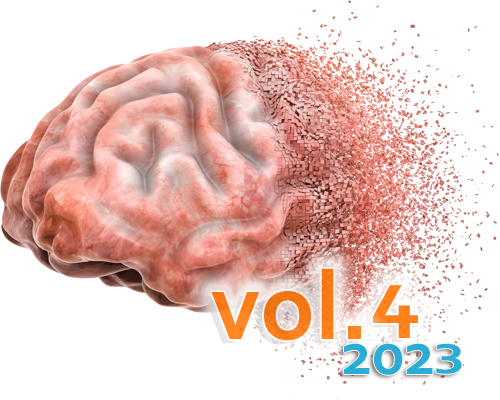Postmortem changes in brain cell structure: a review
DOI:
https://doi.org/10.17879/freeneuropathology-2023-4790Keywords:
Postmortem changes, Oncotic necrosis, Autolysis, Staining methods, Species differences, Brain mappingAbstract
Brain cell structure is a key determinant of neural function that is frequently altered in neurobiological disorders. Following the global loss of blood flow to the brain that initiates the postmortem interval (PMI), cells rapidly become depleted of energy and begin to decompose. To ensure that our methods for studying the brain using autopsy tissue are robust and reproducible, there is a critical need to delineate the expected changes in brain cell morphometry during the PMI. We searched multiple databases to identify studies measuring the effects of PMI on the morphometry (i.e. external dimensions) of brain cells. We screened 2119 abstracts, 361 full texts, and included 172 studies. Mechanistically, fluid shifts causing cell volume alterations and vacuolization are an early event in the PMI, while the loss of the ability to visualize cell membranes altogether is a later event. Decomposition rates are highly heterogenous and depend on the methods for visualization, the structural feature of interest, and modifying variables such as the storage temperature or the species. Geometrically, deformations of cell membranes are common early events that initiate within minutes. On the other hand, topological relationships between cellular features appear to remain intact for more extended periods. Taken together, there is an uncertain period of time, usually ranging from several hours to several days, over which cell membrane structure is progressively lost. This review may be helpful for investigators studying human postmortem brain tissue, wherein the PMI is an unavoidable aspect of the research.
Metrics
Additional Files
Published
How to Cite
Issue
Section
License
Copyright (c) 2023 Margaret M. Krassner, Justin Kauffman, Allison Sowa, Katarzyna Cialowicz, Samantha Walsh, Kurt Farrell, John F. Crary, Andrew T. McKenzie

This work is licensed under a Creative Commons Attribution 4.0 International License.
Papers are published open access under the Creative Commons BY 4.0 license. This license lets others distribute, remix, adapt, and build upon your work, even commercially, as long as they credit you for the original creation. Data included in the article are made available under the CC0 1.0 Public Domain Dedication waiver, unless otherwise stated, meaning that all copyrights are waived.



















